For millions of cash-strapped motorists, buying a used car or truck, rather than a brand-new one, is an option based on sheer necessity. The average transaction price of a new vehicle is nearly $30,000 according to TrueCar.com, an industry research and forecasting company–a figure far too steep to absorb for many U.S. households. Consumers can indeed save thousands of dollars selecting a pre-owned car but buyer beware: shopping for a used vehicle can be in many ways far more difficult–and certainly more perilous–than buying a new one.
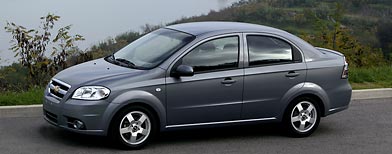
We’ve compiled a list of used cars to avoid, based on data from multiple sources including reliability surveys, resale values and safety ratings, along with our own experiences road-testing these vehicles. Our selections are largely based on the most recent J.D. Power & Associates U.S. Vehicle Dependability Study which determines the least dependable three-year-old cars. The results are based on responses from more than 43,700 original owners of 2008 model-year vehicles regarding problems experienced during the prior 12 months. All of the models on our list were rated “below average” in overall reliability, specifically powertrain performance (engine/transmission/suspension); issues with the body and interior treatments; and failures with features and accessories.
Though the Mitsubishi Eclipse was the small sports car to beat during the early 1990′s, its appeal has suffered a steep decline in recent years. It could have something to do with its dismal resale value. Offered in coupe and Spyder convertible renditions, the Eclipse not only gets poor marks from J.D. Power & Associates for reliability, Automotive Lease Guide says the Eclipse will retain as little as just 25% of its original value after five years of ownership, which is among the lowest residual values–percentage wise–among all cars.
Most three-year-old pickup trucks seem to fare well in the J.D. Power U.S. Vehicle Dependability Study, with the exception of midsize Chevrolet Colorado and GMC Canyon. Offered in three cab configurations, they lack power, particularly when compared to the V-6 and V8-equipped competition. An underwhelming 185-horsepower 2.9-liter four-cylinder standard engine makes these used duds suited only for the most-casual truck buyers.
As far as disappointing used luxury rides go, there’s the costly Land Rover Range Rover Sport, a top-shelf luxury SUV with certified brand cachet that, as a three-year-old model, gets slammed for its poor fuel economy, low resale value and dubious reliability ratings. Developed as a livelier alternative to its larger non-Sport Range Rover sibling, the 2008 vintage comes powered by a relatively lackluster choice of engines rated at 300 and 390 horsepower. Add to that, this generation of the Range Rover Sport remains plagued by what remain among the most confusing dashboard ergonomics in the auto industry.
Chevrolet Aveo
Even without its dismal scores in the current J.D. Power & Associates U.S. Vehicle Dependability Study of three-year-old models, the subcompact Chevrolet Aveo would still make our list for its utter lack of style and substance. Built in South Korea, it's little more than basic transportation, with fuel economy as its prime virtue at 24/34 mpg (most cars in its class do better). Its diminutive 1.6-liter four-cylinder engine limps along with just 103 horsepower, and is best matched to the car's standard five-speed manual transmission; the optional four-speed automatic sucks the life out of the Aveo for the sake of convenience. A cramped interior is slathered with inferior-grade plastics. That it isn't holding up as well as segment stalwarts like the Honda Fit and Toyota Yaris only adds insult to injury.
Dodge Charger / Dodge Magnum
With a storied nameplate that was resurrected for the 2006 model year, the full-size Charger sedan comes wrapped in throwback exterior styling, while the Magnum was cast as an aggressive-looking station wagon. Both are related to the Chrysler 300, which boasts higher marks in the J.D. Power & Associates U.S. Vehicle Dependability Study for body and interior durability. Though enthusiasts may prefer the cars' rear-wheel-drive configuration for its inherently crisper handling qualities, they tend to slip and slide on wet pavement and become stuck in the snow; those fitted with the optional all-wheel-drive system fare better in that regard. A choice of V-6 engines afforded average acceleration, with a 5.7-liter V8 being the quicker, albeit fuel-thirstier, choice. The top SRT-8 model packs a wallop with a 6.1-liter V-8 but is rare and costly. Even when new these cars felt cheap and unfinished and can't possibly fare much better three years down the road, particularly if they were driven hard.
Land Rover Range Rover Sport
Expensive and reportedly repair-prone, with fuel economy at a thirsty 12 mpg in city driving, suffering high maintenance and repair costs and facing a steep and costly drop in resale value between the third and fifth years of ownership, the negatives tend to far outweigh the positives as regard this moderately sporty British luxury SUV. Developed as a livelier alternative to its larger non-Sport Range Rover sibling, the 2008 vintage comes powered by a relatively lackluster choice of engines rated at 300 and 390 horsepower (versus 375/510 horses for the 2011 model). Laden with gadgetry, this generation of the Range Rover Sport remains plagued by what remain among the most confusing dashboard ergonomics in the auto industry.
Suzuki XL7
Discontinued after the 2009 model year, the Suzuki XL7 is a compact crossover SUV that's mechanically related to what is now the prior generation of the Chevrolet Equinox. It's available in five- and seven-passenger versions, with the latter adding a cramped third-row seat that's virtually unusable. Despite its car-based underpinnings the XL7 drives more like a small truck with imprecise steering and intrusive road noise at highway speeds. A 3.6-liter V6 engine delivers an ample 252 horsepower, but its fuel economy – rated at only 16-city/22-highway mpg – isn't much better than many larger and more accommodating SUVs. Not only does it suffer from a below average reliability rating, access to factory parts and service is hampered by the relatively minute Suzuki dealer base.
Though the Mitsubishi Eclipse was the small sports car to beat during the early 1990′s, its appeal has suffered a steep decline in recent years. It could have something to do with its dismal resale value. Offered in coupe and Spyder convertible renditions, the Eclipse not only gets poor marks from J.D. Power & Associates for reliability, Automotive Lease Guide says the Eclipse will retain as little as just 25% of its original value after five years of ownership, which is among the lowest residual values–percentage wise–among all cars.
Most three-year-old pickup trucks seem to fare well in the J.D. Power U.S. Vehicle Dependability Study, with the exception of midsize Chevrolet Colorado and GMC Canyon. Offered in three cab configurations, they lack power, particularly when compared to the V-6 and V8-equipped competition. An underwhelming 185-horsepower 2.9-liter four-cylinder standard engine makes these used duds suited only for the most-casual truck buyers.
As far as disappointing used luxury rides go, there’s the costly Land Rover Range Rover Sport, a top-shelf luxury SUV with certified brand cachet that, as a three-year-old model, gets slammed for its poor fuel economy, low resale value and dubious reliability ratings. Developed as a livelier alternative to its larger non-Sport Range Rover sibling, the 2008 vintage comes powered by a relatively lackluster choice of engines rated at 300 and 390 horsepower. Add to that, this generation of the Range Rover Sport remains plagued by what remain among the most confusing dashboard ergonomics in the auto industry.
Chevrolet Aveo
Even without its dismal scores in the current J.D. Power & Associates U.S. Vehicle Dependability Study of three-year-old models, the subcompact Chevrolet Aveo would still make our list for its utter lack of style and substance. Built in South Korea, it's little more than basic transportation, with fuel economy as its prime virtue at 24/34 mpg (most cars in its class do better). Its diminutive 1.6-liter four-cylinder engine limps along with just 103 horsepower, and is best matched to the car's standard five-speed manual transmission; the optional four-speed automatic sucks the life out of the Aveo for the sake of convenience. A cramped interior is slathered with inferior-grade plastics. That it isn't holding up as well as segment stalwarts like the Honda Fit and Toyota Yaris only adds insult to injury.
Dodge Charger / Dodge Magnum
With a storied nameplate that was resurrected for the 2006 model year, the full-size Charger sedan comes wrapped in throwback exterior styling, while the Magnum was cast as an aggressive-looking station wagon. Both are related to the Chrysler 300, which boasts higher marks in the J.D. Power & Associates U.S. Vehicle Dependability Study for body and interior durability. Though enthusiasts may prefer the cars' rear-wheel-drive configuration for its inherently crisper handling qualities, they tend to slip and slide on wet pavement and become stuck in the snow; those fitted with the optional all-wheel-drive system fare better in that regard. A choice of V-6 engines afforded average acceleration, with a 5.7-liter V8 being the quicker, albeit fuel-thirstier, choice. The top SRT-8 model packs a wallop with a 6.1-liter V-8 but is rare and costly. Even when new these cars felt cheap and unfinished and can't possibly fare much better three years down the road, particularly if they were driven hard.
Land Rover Range Rover Sport
Expensive and reportedly repair-prone, with fuel economy at a thirsty 12 mpg in city driving, suffering high maintenance and repair costs and facing a steep and costly drop in resale value between the third and fifth years of ownership, the negatives tend to far outweigh the positives as regard this moderately sporty British luxury SUV. Developed as a livelier alternative to its larger non-Sport Range Rover sibling, the 2008 vintage comes powered by a relatively lackluster choice of engines rated at 300 and 390 horsepower (versus 375/510 horses for the 2011 model). Laden with gadgetry, this generation of the Range Rover Sport remains plagued by what remain among the most confusing dashboard ergonomics in the auto industry.
Suzuki XL7
Discontinued after the 2009 model year, the Suzuki XL7 is a compact crossover SUV that's mechanically related to what is now the prior generation of the Chevrolet Equinox. It's available in five- and seven-passenger versions, with the latter adding a cramped third-row seat that's virtually unusable. Despite its car-based underpinnings the XL7 drives more like a small truck with imprecise steering and intrusive road noise at highway speeds. A 3.6-liter V6 engine delivers an ample 252 horsepower, but its fuel economy – rated at only 16-city/22-highway mpg – isn't much better than many larger and more accommodating SUVs. Not only does it suffer from a below average reliability rating, access to factory parts and service is hampered by the relatively minute Suzuki dealer base.
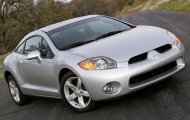
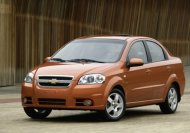
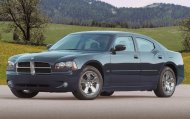
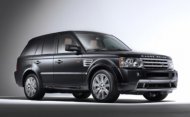
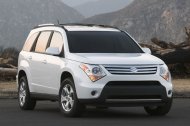
No comments:
Post a Comment